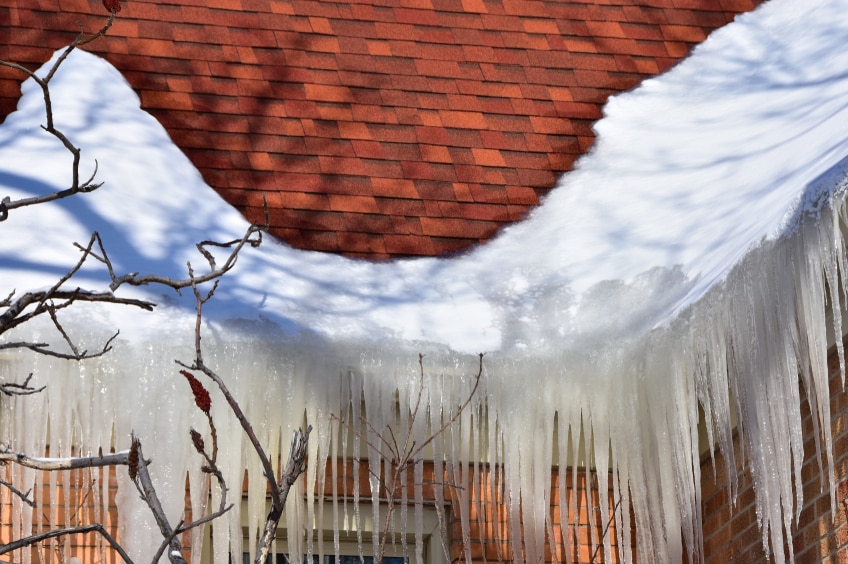Among the potential issues homeowners need to deal with in colder weather, few are quite as troublesome as ice dams. When winter arrives, the roof is a home's first line of defense against nature. Changing temperatures can force water to inconsistently melt and freeze once more, causing water leaks and icy blockages that may be responsible for causing damage to roof shingles, wood decking, gutters, and insulation down the line.
What Are Ice Dams?
An ice dam is a large chunk of ice that can form when snow sitting on a roof melts into water, which then flows down to the roof edge and refreezes along the eaves.
They are commonly the result of poor insulation and improper attic ventilation: when warm air rises in the attic, it melts the snow on the roof surface above it. As the snowmelt flows towards the eaves, it can freeze along this area, since it's often colder. Clogged gutters also tend to lead to ice buildup. When the water isn't able to flow away, blocked by debris like leaves or dirt buildup in the gutters, the water that remains can freeze into ice.
Proper roof maintenance, including cleaning the gutters and removing snow from the roof using a snow rake, can help homeowners stop ice dams from forming, but they are bound to occur as long as the primary cause remains. For bigger attics, consider products designed to help with attic ventilation, such as Master Flow® Power Attic Vent ERV4 or Master Flow® Power Attic Vent ERV6.
Why It's Important to Prevent Ice Dams
When blockages form, they stop any remaining water from flowing away. This pooled water has nowhere else to go and can eventually make its way inside. As the ice buildup prevents snowmelt from leaving the roof, the water may seep between the roof shingles—any loose or damaged shingles will let the water pass, which could deteriorate the materials underneath unless the home has a leak barrier such as GAF StormGuard® or WeatherWatch®.
When water leaks through the roof and into the attic, this excessive moisture can cause mold growth, and brownish spots may appear near the ceiling or on an interior dry wall. Attic insulation can also get wet as a result, which reduces its efficiency and may require a complete insulation replacement. Since the accumulated ice can become heavy, the added weight also puts stress on the gutters and downspouts, damaging them and potentially requiring replacements or repairs.
Apart from the damage they cause to different parts of the roof, these ice chunks are also a safety hazard. The large icicles can fall off at any moment, and if they're below a walking path, the dangers can be pretty high. Physically removing a large piece of ice isn't a straightforward or relatively safe process, which is why professionals are recommended for the job.
Explaining Ice Dams to Customers
Speak in plain English and be sure to explain both the cause of the ice dam as well as the different ways in which damage can occur. Avoid using any roofing lingo or terms that homeowners may not understand—or, if you need to pull out a specialized term, make sure to define it clearly. Carefully explain to customers that removing large pieces of ice on their own can be dangerous and cause harm to a roof if done improperly.
Recommend that customers deal with ice dams as soon as possible to prevent further damage. Getting completely rid of them involves more than just physically removing the blockage; homeowners should understand they need to fix the main cause directly. Removing them without first addressing the root problem means that new dams can just as easily reappear.
Educating customers on the dangers of ice dams and the importance of prevention can help homeowners ensure their home has solid support from floor to roof. Positioning yourself as an expert, not strictly a salesperson, is key.
To learn more about how our products can help you solve your customers' ice dams problems, reach out to your local GAF Territory Manager.

